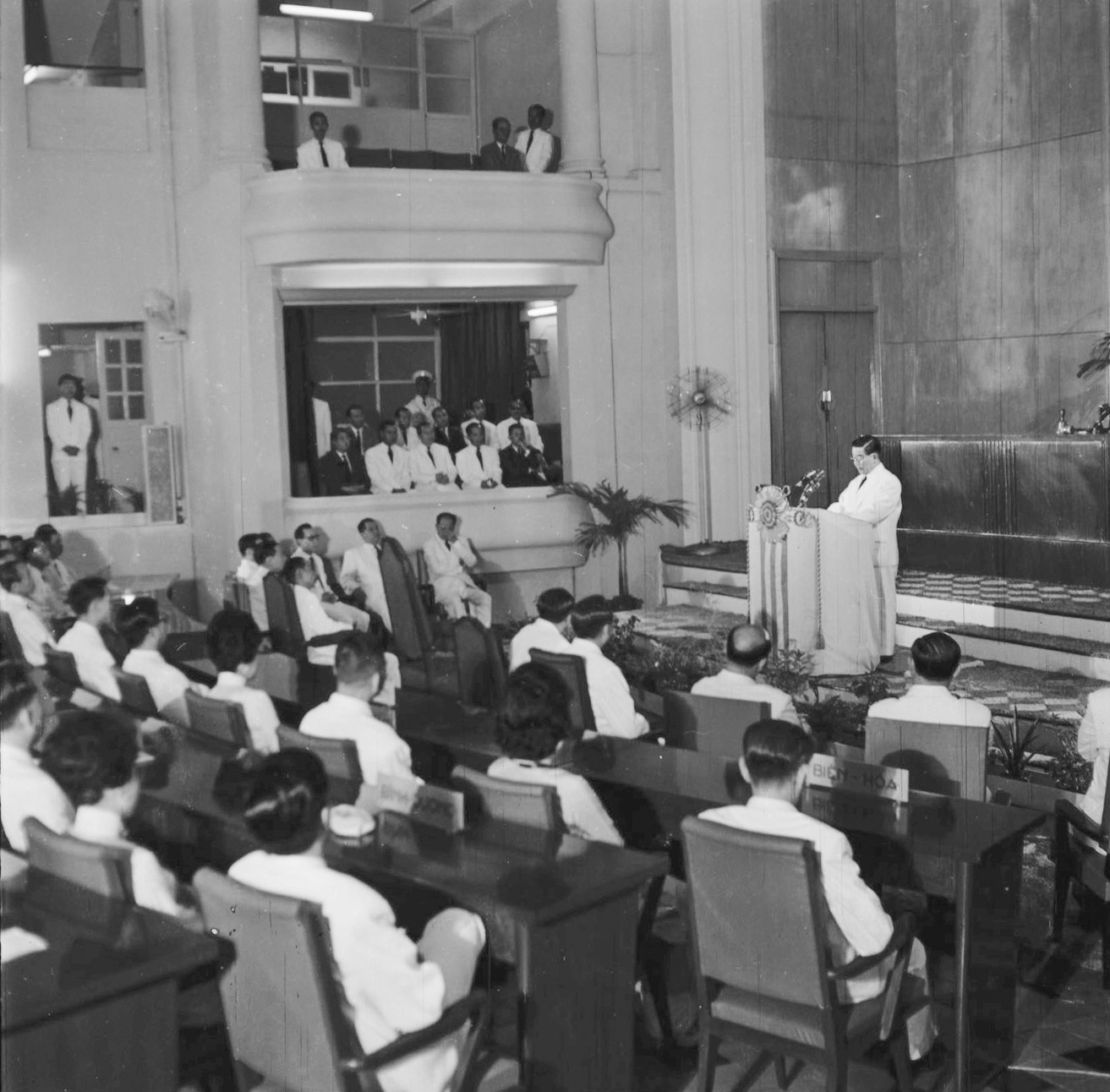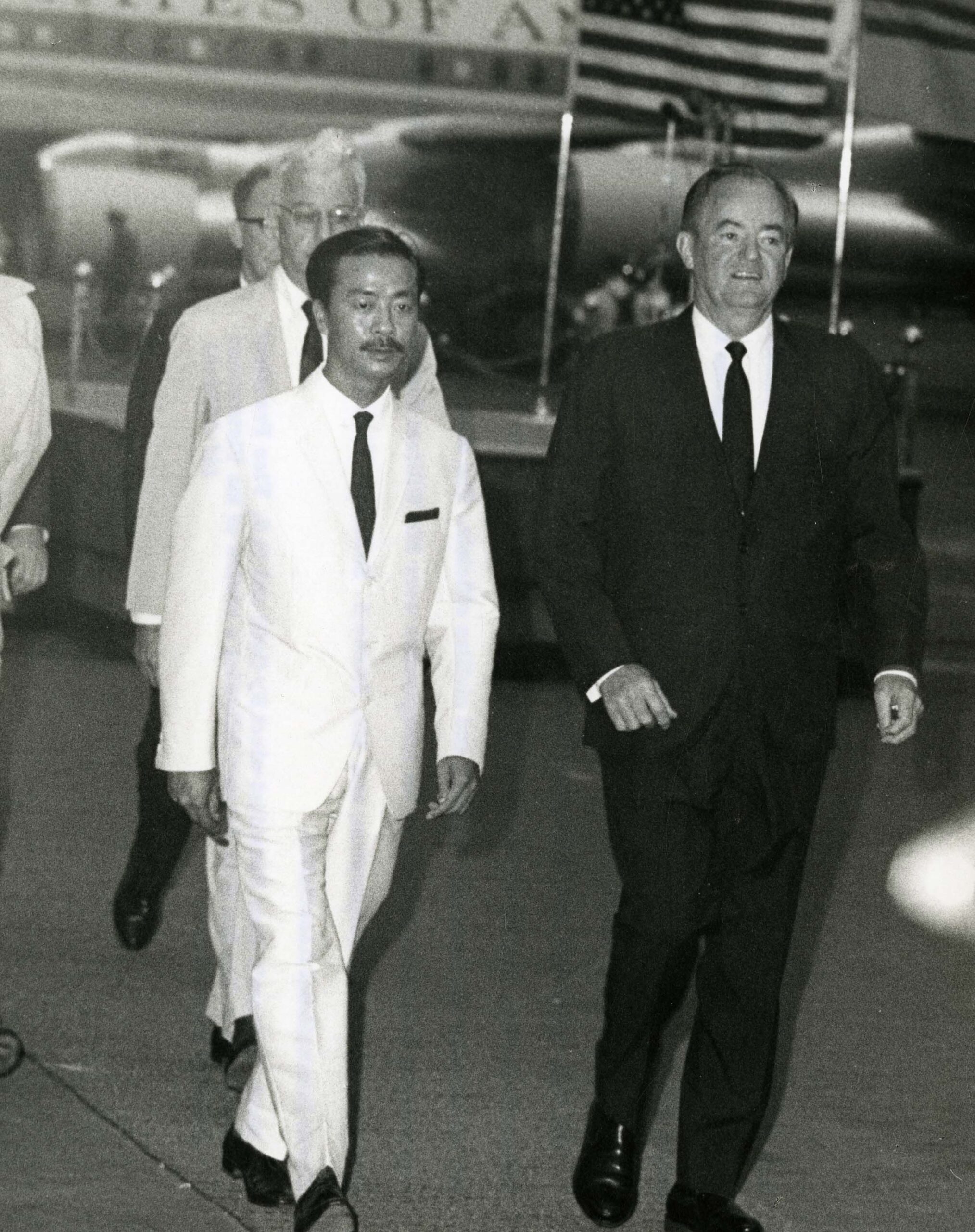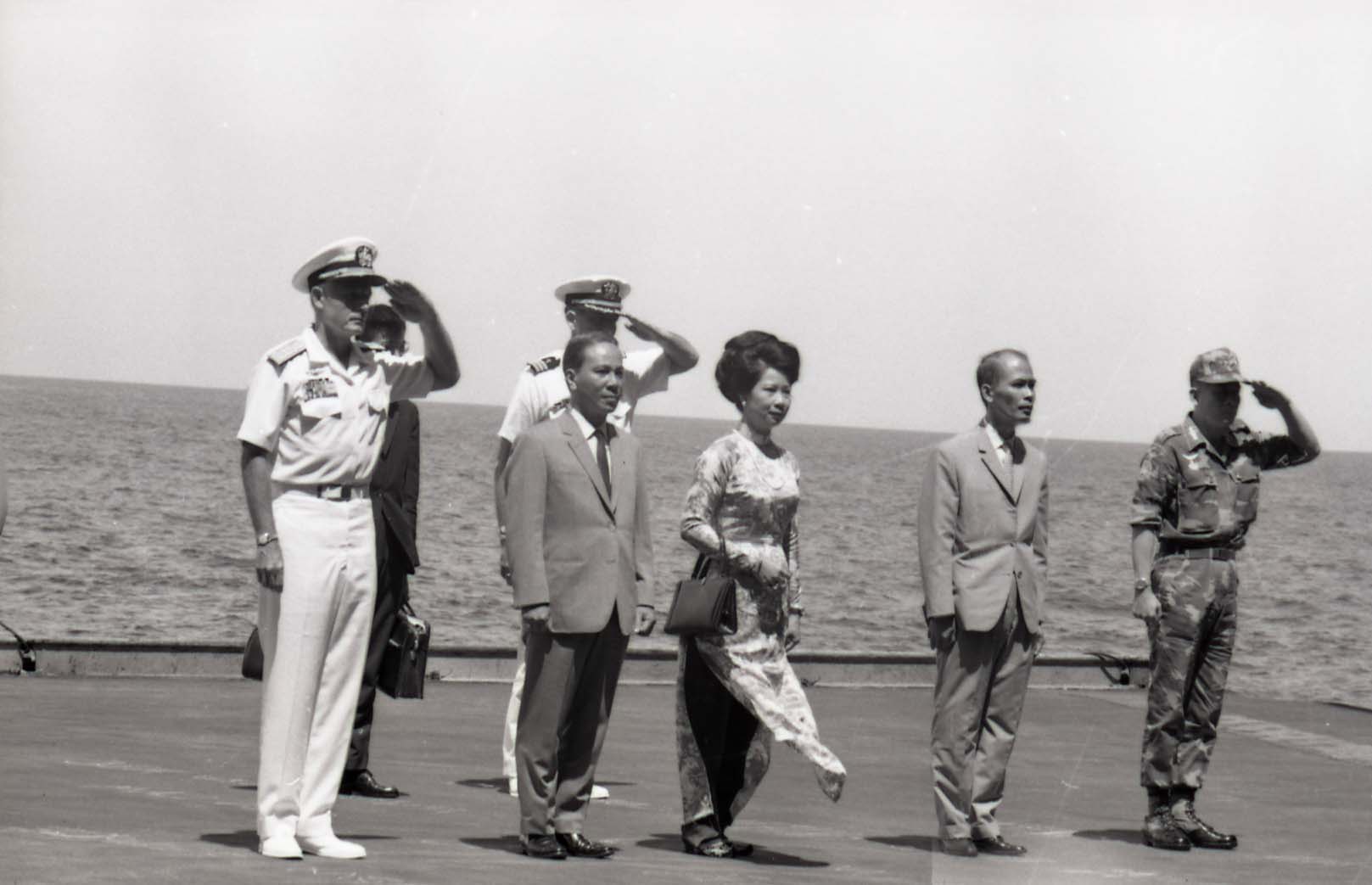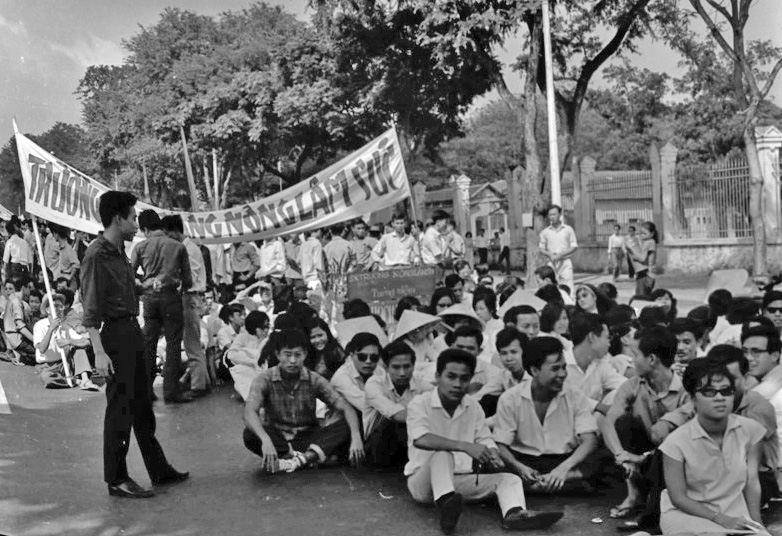Journalism in Action: Beverly Deepe Keever and Her Career
Archives & Special Collections, University of Nebraska-LincolnSouth Vietnamese Politics
Beverly Keever extensively covered South Vietnamese politics, coups, elections, and protests throughout her time in South Vietnam (1962-1968). Below are articles and photos on the major political leaders and protest movements during her time in Vietnam.

Ngô Đình Diệm addressing National Assembly, 1963
Ngô Đình Diệm
Ngô Đình Diệm became Prime Minister in 1954. Under his rule, South Vietnam signed the 1954 Geneva Accords, abolished the emperor, and secured American support. Diệm’s government was known for its nepotism, corruption, and autocratic control of civilians and the press. Diệm’s policies that favored the Catholic church and attacked Buddhist institutions eventually led to widespread protest and a military coup in 1963. Ngô Đình Diệm was shot by ARVN troops during the coup.
Read the articles here.
See the photos here.
Nguyễn Khánh
After the 1963 coup, the military formed the Military Revolutionary Council (MRC), but Nguyễn Khánh seized control of the Council in January 1964. Khánh had several public feuds with U.S. Ambassador Maxwell D. Taylor, which were heavily covered by Keever throughout 1964. The Americans were displeased with the instability under Khánh, so they encouraged ARVN generals oust and exile him from South Vietnam in February 1965.
Read the articles here.
See the photos here.

Nguyễn Khánh at a press conference, 1964

Hubert Humphrey and Nguyễn Cao Kỳ walking together, 1967
Nguyễn Cao Kỳ
After the ousting of Khánh, power returned to the Military Council led by General Nguyễn Văn Thiệu. However, Thiệu was simply a figurehead, and Air Marshal Nguyễn Cao Kỳ exercised most of the powers of state as Prime Minister. Kỳ was responsible for expanding ARVN, so even though during the elections in 1967 where Thiệu became President and Kỳ became Vice-President, he still held significant ARVN support. It wasn’t until 1971 that Thiệu was able to truly wrestle power away from Kỳ.
Read the articles here.
See the photos here.
Nguyễn Văn Thiệu
As it was noted above, after the ousting of Khánh, power returned to the Military Council led by General Nguyễn Văn Thiệu. There was a long power struggle from 1965 to 1971 between Thiệu and Kỳ, eventually resulting in Thiệu holding dictatorial power over South Vietnam. Under Thiệu, South Vietnam would eventually lose American support and eventually lose the war in 1975.
Read the articles here.
See the photos here.

Nguyễn Văn Thiệu and Nguyễn Thị Mai Anh on a US Navy Ship, 1968

Student protesters at the Ministry of Information, 1964
Buddhist and Student Protesters
Both the colonial French and Ngô Đình Diệm’s government discriminated against Buddhists in South Vietnam. A protest movement slowly grew, and in 1963 it reached a breaking point in what is known as the “Buddhist Crisis.” Protestors filled the streets in Saigon, there were several widely publicized cases of monks going on hunger strike and self immolating, and clashes with the police turned violent. The Buddhist Crisis eventually led to a coup against Diệm in 1963. There were sporadic student and Buddhist protests after the coup, but in general the policy toward Buddhists improved and protests were less necessary.
Read the articles here.
See the photos here.
